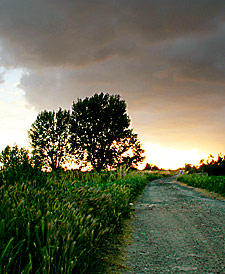
It may be some time before we see the like of Mary Andrews again, writes MARGARET RODGERS
Many people, viewing the tiny, frail, elderly deaconess speaking often in the Sydney Synod in the 1980s and early 90s may not have realised that they were listening to one of the most extraordinary female ministers in the history of the Diocese of Sydney. It may be some time before her like is seen again.
CMS missionary, then Head Deaconess and Principal of Deaconess House Mary Andrews spent her whole working life in gospel service and the training of women for ministry.
In her later years she would express her opinions forthrightly, however much she disagreed with archbishops, bishops, Moore College principals, etc. Former students and colleagues remember her saying, "Bishops are cream-puffs compared to the generalissimo of the Chinese communist forces".
Her legacy is remembered in the 1997 re-naming of Deaconess House as Mary Andrew College. The present Principal and Head of the Diocesan Women's Ministry team, Archdeacon Narelle Jarrett said, "Mary Andrews encouraged everyone to answer Christ's call to live for him. She was a woman of Christian commitment who, even at the end of her life, was still inviting people to join her in
ministries that she believed needed to be done."
Hearing the call
Mary Maria Andrews was born in March 1915. In 1931 she was challenged at an Eastwood tent meeting by missionary deputationist William "Cairo' Bradley. Walking to the front of the meeting she said, "I am willing to be obedient, even if it means going to China."
In later years she always warned her students with missionary interests, "You are sure to be sent where you don't want to go," explaining it was an outworking of Christian obedience to God's call to the mission field.
Aged 21, Mary was further challenged when she heard CMS missionary Nora Dillon talk about the great need for pastoral workers in South China.
In late August 1938 the CMS General Secretary Frank Hulme-Moir visited her and said, "Listen, Mary, get ready to sail for China in two week's time." So on September 14, 1938, Mary Andrews sailed for China to do language study before she joined Nora Dillon.
Her ministry in China, faithfully bearing fruit for the gospel, but at times dangerous, has been well chronicled by Margaret Yarwood Lamb in Going it Alone: Mary Andrews " missionary to China 1938 to 1951. This is a missionary biography that should not be missed.
Deaconess moves
On her return from China in 1951 she was appointed Head Deaconess by Archbishop Howard Mowll, and the next year also Principal of Deaconess House. She served in those roles until she retired from paid ministry at the end of 1975 " though for her it could never mean the end of active ministry.
Spurred on by Archbishop Mowll's vision of seeing "a deaconess on the staff of every parish' as well as trained clergy wives in rectories and well prepared women missionaries, she oversaw the expansion of Deaconess House during the 1960s with a much larger student body and two new wings of bedrooms and a large lecture hall added.
Enrolments of women students were shrinking by the beginning of the 1970s. A number of factors contributed to this decline, for example, the foundation of St Andrew's Hall took all CMS missionary candidates to Melbourne.
There was also a certain quaint air about the student deaconesses who, at the beginning of the 70s, were still required to wear to lectures the grey uniform with stiff starched collar " it did not sit well with the prevailing female fashion.
Ordination debate
But above all, the emerging debate within the Anglican Church of Australia about female ordination made many Sydney clergy look with some suspicion on the women in training. They began not to encourage their young women to train at Deaconess House, and they were far less prepared to employ a trained woman worker. With a loss of career and ministry opportunities, and a growing lack of acceptance, numbers declined.
Mary was a firm supporter of women's ordination and she made her views known in the media. In 1969 she told The Australian, "The Church was losing ground in Australia because it was male dominated and perpetuated prejudices against women."
In 1970 she told The Anglican, "There is a failure to recognise that we are living in an age of rapid change when God is calling for men and women to venture forth in different forms of ministry outside the traditional church structures. Sometimes I feel the church puts structures before the movements of God's Holy Spirit in the life and ministry of the church." This sentiment, uttered 35 years ago, is extraordinarily contemporary in the 2005 Sydney Diocesan context.
When the women's ordination Canon failed in General Synod in 1985, she told the Age reporter, "We've lost this time, but we'll rise to fight another day, maybe". Women became members of Sydney Synod in 1972. Mary first attended Synod when she returned from China, seated beside Mrs Dorothy Mowll in the Public Gallery. She attended each year after that, even when retired.
A missionary who was always mission-minded; a trainer of women for ministry who called everyone to gospel ministry; a women who would not be silenced and spoke forthrightly; this was Mary Andrews.
















